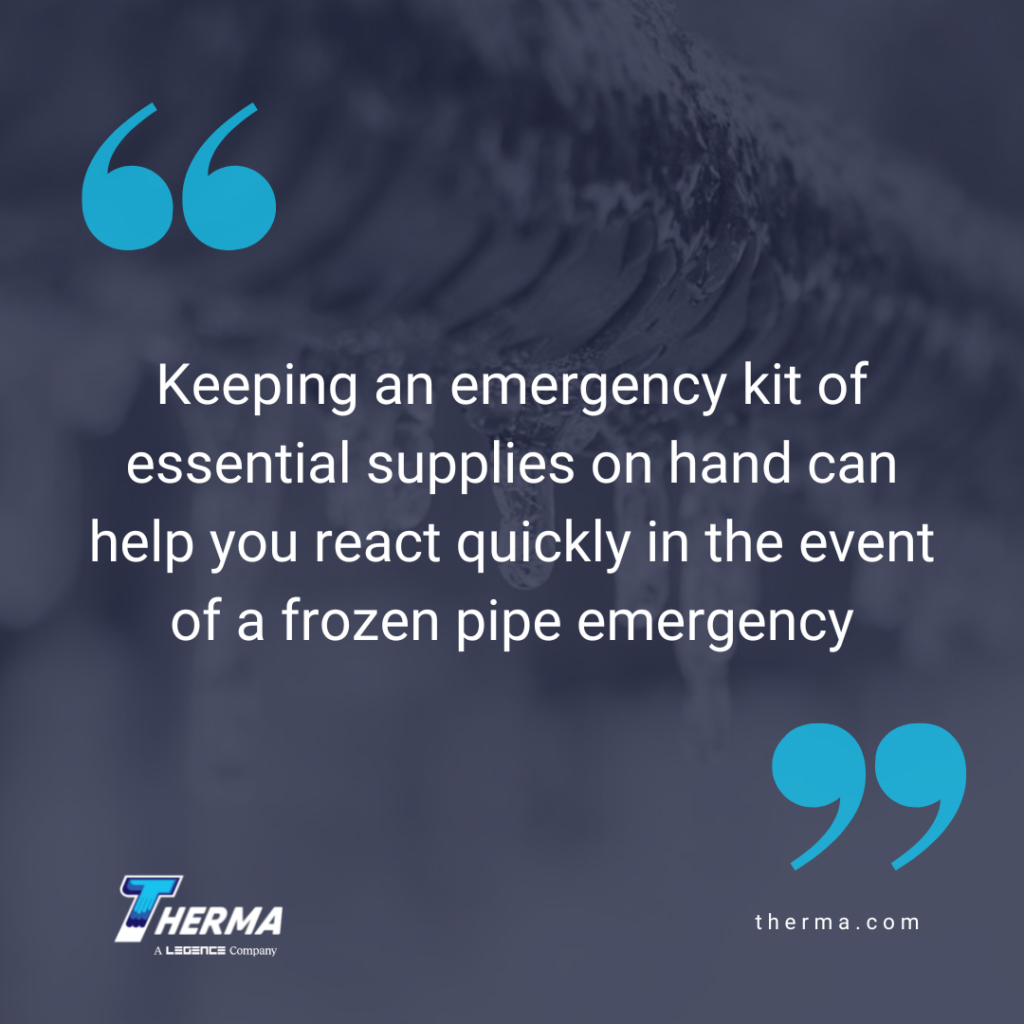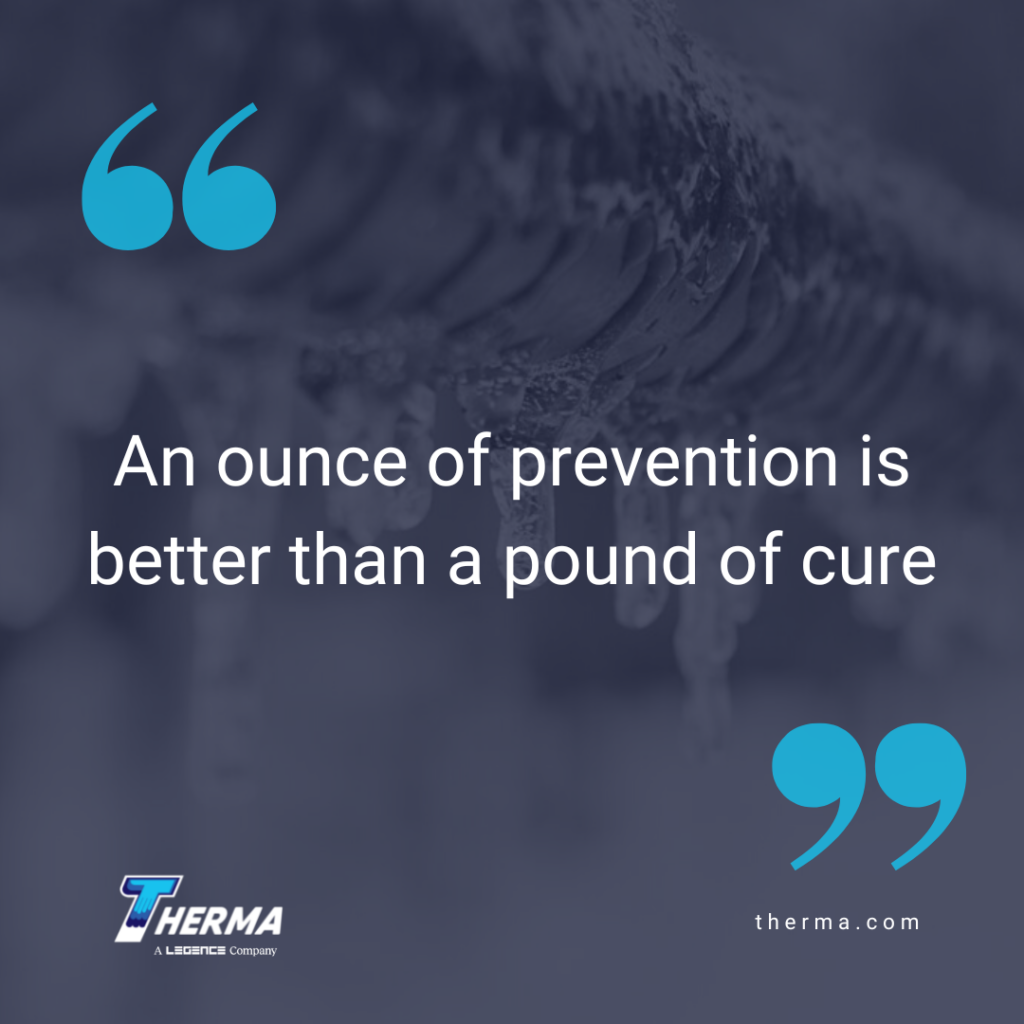by Robert Evans
Cold winter weather can wreak havoc on businesses, especially when it comes to frozen pipes. Water damage can be a significant expense, with annual claims due to water-related damage making up approximately 15% of all business insurance claims. Business owners may find themselves facing an average cost of $17,000 per claim. While we can’t control the weather, being proactive is the best way to prevent pipes from freezing. Learn the precautions you can take so you don’t become an insurance statistic.
Why Do Pipes Freeze?
The anomalous expansion of water refers to the unusual behavior of water when it freezes. Unlike most substances, which contract and become denser when they freeze, water expands as it freezes. This expansion occurs because the arrangement of water molecules changes as they transition from a liquid to a solid state, causing an increase in volume. The anomalous expansion of water is particularly important for pipes, as the expansion of frozen water inside pipes can put pressure on the pipes and cause them to burst.
Preventative Measures
The expression, “An ounce of prevention is better than a pound of cure”, is particularly fitting when it comes to averting a frozen pipes catastrophe. Implementing the following strategies and devices individually or in combination offers a comprehensive solution to prevent pipes from freezing. It’s important to choose the right device for the specific requirements of the plumbing system, taking into consideration the location and size of the pipes.
Pipe Insulation
Proper insulation of pipes can significantly reduce the risk of frozen pipes. Insulation should be applied to pipes located in unheated areas such as attics, garages, and basements. High-temperature rated foam insulation should be used to cover the pipes completely, leaving no parts exposed to the cold.
Air Leak Sealing
Air leaks can introduce cold air and lower the temperature of pipes. It is imperative to identify and seal all air leaks to prevent this. This can be done using caulk, weather stripping, or foam sealant in areas around windows and doors, attics, and basements.
Temperature Consistency
Maintaining a consistent temperature is crucial in preventing pipes from freezing. If the premises will be unoccupied for an extended period, it is advisable to set the temperature to at least 55°F. This will reduce the risk of frozen pipes and minimize energy costs.
Warm Air Circulation
Circulating warm air can help to keep pipes from freezing. Keep interior doors open. Using vents or fans to distribute warm air can help prevent pipes from reaching freezing temperatures.
Cabinet and Drawer Access
If pipes are located in areas exposed to cold air, such as under sinks, keep cabinet and drawer doors open to allow warm air to circulate.
Outdoor Faucet Shut-off
Outdoor faucets can be a significant source of frozen pipes. To prevent this, all outdoor faucets should be turned off and bled. Hoses should be disconnected before temperatures drop below freezing.
Heat Tape Installation
Heat tape is an electrical device used to provide heat to pipes to prevent them from freezing. It consists of a heating element that is wrapped around the pipe and a thermostatic control that turns the heat on and off as needed. When the temperature of the pipe falls below a certain point, the heat tape will turn on and warm the pipe. When the temperature of the pipe rises above that point, the heat tape will turn off. This process continues as needed to keep the pipe from freezing.

Heating Cables
Similar to heat tape, heating cables can be installed around pipes to prevent freezing. They work by providing a continuous source of heat, keeping pipes above freezing temperatures.
Pipe Sleeves
Pipe sleeves are insulating materials that can be fitted around pipes to prevent heat loss. They are available in a variety of materials, including foam and fiberglass to fit around the circumference of a pipe. This allows them to be secured directly onto the surface of the pipe, creating an airtight seal that prevents any outside elements from entering the interior wall of the pipes.
Portable Heaters
Portable heaters can be used to warm pipes in unheated areas, such as garages and basements. They are particularly useful for spot heating and can be moved as needed.
Generators
While severe weather events like tornadoes, hurricanes, and snow are associated with power loss, cold temperatures alone can cause outages; the extra load on the power grid can cause blackouts. Commercial-grade generators can rescue your business if you face this situation. Having a generator on hand can ensure that pipes are kept warm even if the power is out.
Insulated Blankets
Insulated blankets can be wrapped around pipes to prevent heat loss and keep pipes above freezing temperatures. They are available in a variety of sizes and materials and are easy to install.
Smart Thermostats
Smart thermostats can be programmed to automatically adjust temperatures based on the outside temperature, reducing the risk of frozen pipes. They can also be controlled remotely, making it easy to adjust temperatures from a distance.
Plumbing Monitoring Systems
Plumbing monitoring systems can be installed to monitor pipes for freezing temperatures. Sensors send alerts when temperatures drop below a set point, allowing for quick action to be taken before pipes freeze.
Freeze Alarms
A freeze alarm is an important component to protect your property from freezing. Set the alarm to issue an alert when the indoor temperature drops below 45 degrees Fahrenheit. This will give you sufficient time to take action and warm up any area of your business that is at risk of frozen pipes. The alarm will detect a drop in temperature and alert you, allowing you to take action before the temperature drops too low and your pipes freeze.
Professional Assistance
As with any disaster prevention strategy, it is important to regularly inspect and update your pipes’ insulation and other preventive measures as needed. Additionally, keeping an emergency kit of essential supplies on hand can help you react quickly in the event of a frozen pipe emergency. By taking these proactive steps, you can minimize the risk of frozen pipes and ensure that if the steps listed above are not feasible, or if the commercial plumbing system has a history of frozen pipes, we suggest you seek professional guidance.
Therma Expertise
For the past half a century, Therma has been shaping the mechanical construction industry in California with our innovative solutions and exceptional client service. Our focus on providing tailored, cost-effective solutions while prioritizing client needs has earned us repeat business and strong relationships. Over the years, we have built a strong portfolio of successful projects and established hundreds of long-lasting client relationships across diverse markets, including Biopharmaceutical, Education, Healthcare, Food & Beverage, Commercial, Industrial, and Data Centers. Reach out to us for unparalleled expertise to assess and implement solutions that match your requirements.
References
American Society for Testing and Materials: Standard Specification for Mineral Fiber Blanket Insulation and Blanket-Type Pipe Insulation (Metal-Mesh Covered) (Industrial Type)
Electric Generators Direct: Best Commercial Generators
Insulation Institute: Pipe Insulation Codes and Standards
Science Facts: Why Does Water Expand When It Freezes
Globe Midwest Adjustors International: The 5 Most Common Business Insurance Claims








